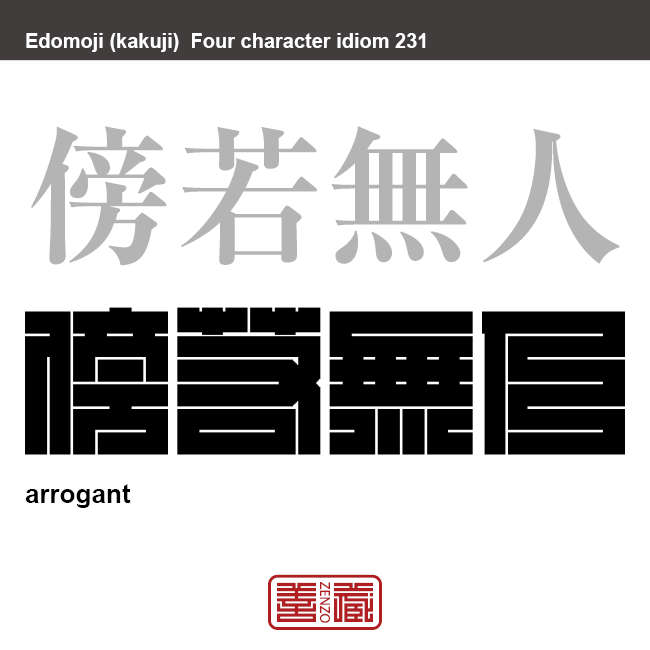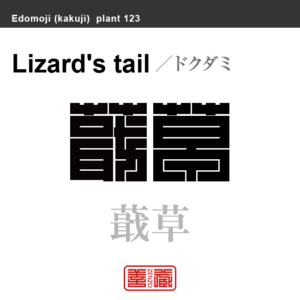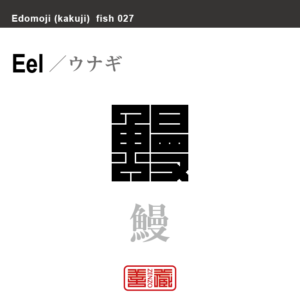傍若無人 ぼうじゃくぶじん 角字でことわざ、四字熟語

傍若無人
ぼうじゃくぶじん
Boujyaku-Bujin
Arrogant
Unicode: [傍_0x508D][若_0x82E5][無_0x7121][人_0x4EBA]
旁(かたわら)に人無き者の若(ごと)し。「まるで周りには誰もいないかのよう」な様子。
転じて、周囲のことを考えず、まるで周りには誰もいないかのように、ふるまうさま。
「史記」刺客列伝が出展
荊軻(けいか)は酒を嗜たしなみ、日々狗を殺したり、高漸離(こうぜんり)と燕市で飲んでいた。
酒がたけなわになると、高漸離は筑(ちく)を奏で、荊軻は合わせて市中に歌い、相楽しんだ。
やがて互いに泣きあい、その様子は「旁(かたわら)に人無き者の若(ごと)し」であった。
角字とは?
江戸時代に誕生した角字は、正方形のグリッド内にほぼ水平・垂直のラインのみで文字(漢字)が表現されるグラフィックアートです。
正方形という限られた空間の中に、あらゆる文字を閉じ込めようとするグラフィックデザインは、前述した、ミニマムな物に対する日本人特有のこだわりが随所に感じられます。
そのシンプルで有りながら、奥深い「角字」は多くの日本人を魅了し、お祭りで着る半被や印半纏(しるしばんてん)と言われる着物や、商標、印鑑、家紋、看板デザインなどに今日まで数多く使用されてきました。
What is Kakuji?
There is a style of penmanship called “Kakuji” in Japan. Edo-born Kakuji is a graphicart that expresses letters (kanji) with almost horizontal and vertical lines only.
The design which bases on many straight lines seems simple, or too plain even at its first glance; yet this beautiful artistic penmanship that encompasses the aesthetic of the Japanese in the Edo era, also known as “Iki”, and playfulness has long been inherited to this day, thanks to the masteries’ long years of efforts in training and refinement.
Kakuji with its simplicity and depth is used for designs such as trademark, hanko stamp, family crest and signboard.































































 2文字コード:MZ 3文字コード:MOZ 数字:508 ITU:258 ccTLD:.mz
2文字コード:MZ 3文字コード:MOZ 数字:508 ITU:258 ccTLD:.mz







































































































































